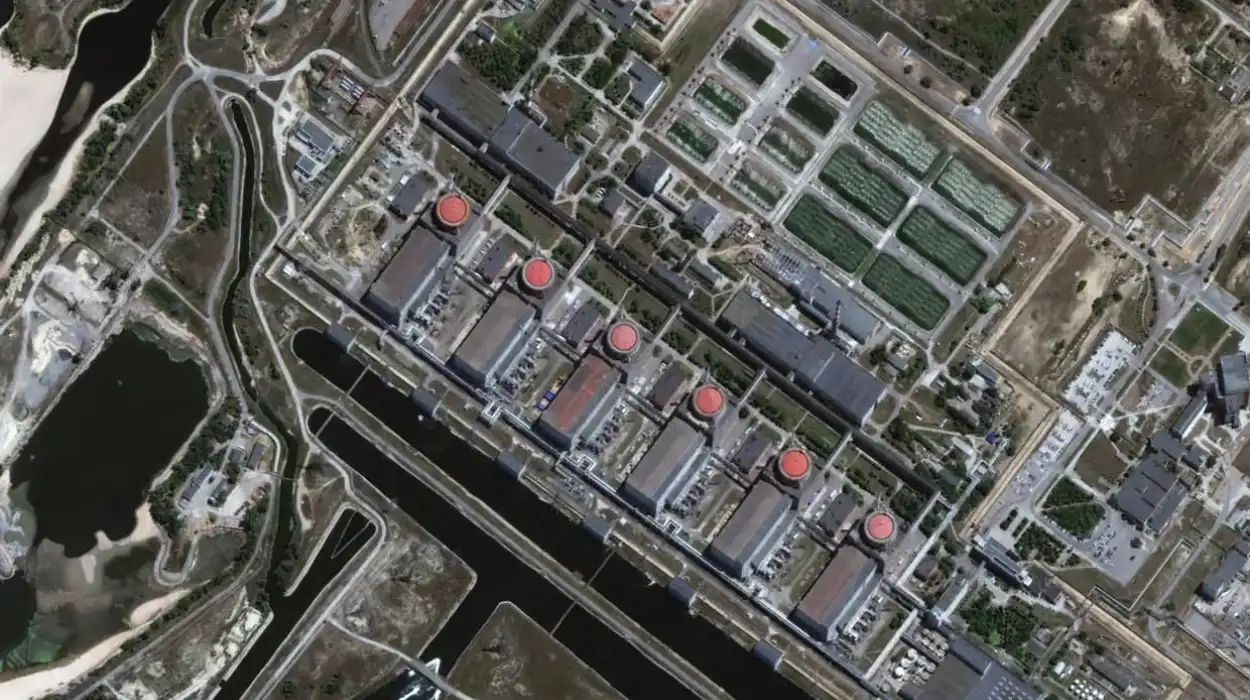Kyiv (Parliament Politics Magazine) – Safety concerns rise as Zaporizhzhia plant suffers record outage, with IAEA warning of nuclear risks under Russia’s continued control.
As reported by The Guardian, the Russian-held Zaporizhzhia nuclear plant has been without external power for over three days, marking a record outage and sparking safety fears at the frontline site.
The plant is operating on emergency generators to maintain safety functions. Its final external power line was severed at 4:56 pm Tuesday, with no sign of reconnection.
Who is responsible for the power line damage at Zaporizhzhia?
Zaporizhzhia has experienced nine external power losses, all caused by Russian strikes on energy infrastructure in Ukrainian-controlled areas. The last 750-kilovolt power line crossed the river, with Ukraine offering electricity to ensure safety.
A power line near the Zaporizhzhia plant was damaged on the Russian-controlled side. Russian operators said repairs were ‘complicated by ongoing shelling by Ukrainian forces,’ while Kyiv denied targeting the facility, citing the extreme risks.
IAEA’s views on the Zaporizhzhia power outage
Rafael Grossi, head of the International Atomic Energy Agency, called the situation at Zaporizhzhia “deeply concerning.” He met Russian President Vladimir Putin on Thursday, but the outage remains unresolved.
According to the IAEA, Russian operators reported sufficient diesel to keep emergency generators running for 20 days, with no fuel resupply needed during this time.
Mr Grossi warned that the loss of external power “increases the likelihood of a nuclear accident.”
Following their Thursday meeting, neither Mr Grossi nor Mr Putin addressed the situation at Zaporizhzhia in public statements.
The Russian president told Mr Grossi, “We will do everything we can in order to support your work.”
Mr Grossi called the meeting “timely and important.”
Ukrainian officials and experts’ stance on Russia’s actions at Zaporizhzhia
Ukrainian authorities and Western experts warn that Russia may be creating a crisis at Europe’s largest nuclear plant to strengthen its control. They said Moscow is taking dangerous measures to restart at least one reactor under wartime conditions.
One Ukrainian government official stated, “Russia is using the nuclear power station as a bargaining chip.”
Kyiv’s officials said no nuclear plant has operated beyond the 72-hour limit set by European regulators after Japan’s 2011 Fukushima disaster.
A Greenpeace expert said the Russian occupation at Zaporizhzhia has reached “a new critical and potentially catastrophic phase.”
Yuriy Chernichuk’s stance on integrating Zaporizhzhia into the Russian grid
Yuriy Chernichuk, heading the Russian-controlled Zaporizhzhia plant, confirmed that the Zaporizhzhia plant’s integration into Russia’s grid is nearly complete.
Experts warn that restarting a reactor amid wartime conditions would be without precedent.
Shaun Burnie’s views on Russia’s nuclear reactor plans
Shaun Burnie, a nuclear expert at Greenpeace Ukraine, called on the IAEA to take immediate action.
He added,
“Grossi needs to immediately tell the Russian government to abandon its plans for reactor restart and to make clear that they alone are responsible for the nuclear safety and security crisis.”
Why is the Zaporizhzhia plant at the center of international talks?
In March 2022, Russia seized the Zaporizhzhia plant, shutting down its reactors, which could once power 4 million homes.
Ukraine considers the Zaporizhzhia plant its own, though it has become part of discussions between the US’s Donald Trump and Vladimir Putin. Mr Trump suggested the US should take control, while the Kremlin wants to restart the reactors and connect them to the Russian grid.
How close is Zaporizhzhia to a Fukushima-style meltdown?
The plant relies on only seven of its 18 generators to keep the reactors cool. Ukrainian sources warn that if they fail, the six reactors’ fuel could overheat over weeks, risking a meltdown.
Fukushima experienced an accelerated version of this risk because the reactors were still active. A 9.0-magnitude earthquake struck Japan, automatically shutting down the hot reactors.
Backup generators kept the reactors cool, but a tsunami minutes later disabled them. Within three days, three reactor cores melted, though the fuel remained contained. No fatalities were reported, but over 100,000 people were evacuated.
Greenpeace’s satellite analysis of Russia’s actions at Mariupol
According to Greenpeace, satellite images reveal 125 miles of Russian grid construction from the occupied city of Mariupol, though it is unclear if the power plant has been fully connected.
Satellite images show Russian forces built a dam across an inlet channel to secure a water source. Greenpeace experts say there is enough water for Russia to restart one reactor, potentially allowing it to claim sole control of the site.
Key facts about the Ukraine-Russia war
The conflict began in February 2014 when Russia annexed Crimea, followed by the war in Donbas in April 2014. Between 2014 and 2021, around 14,200–14,400 people were killed, including fighters and civilians.
The full-scale invasion started on February 24, 2022. Since then, combined military and civilian casualties are estimated at around one million.


